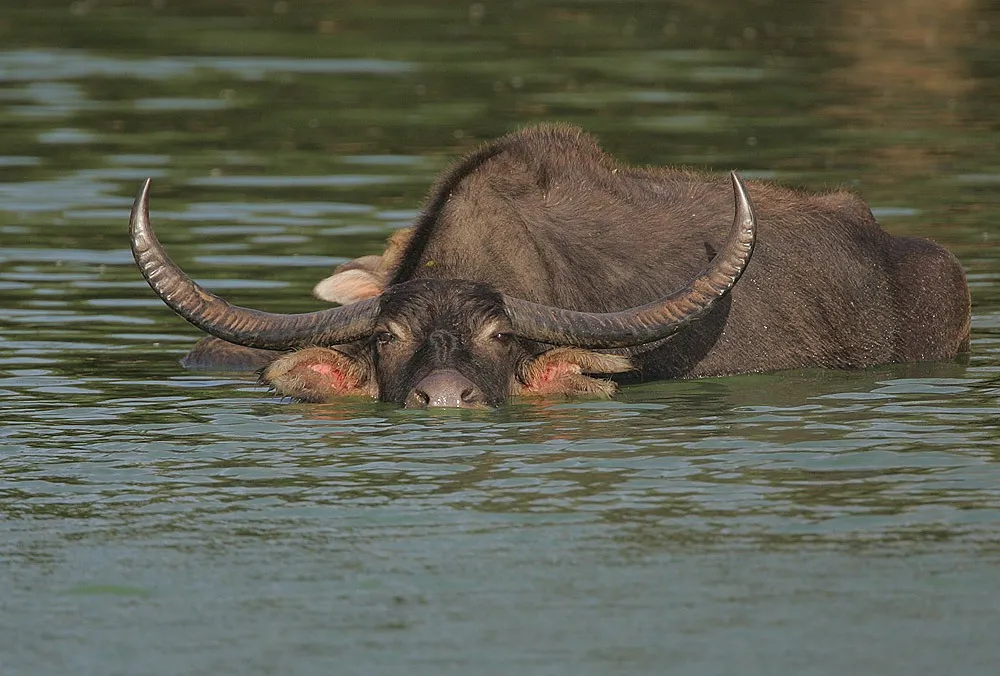The Assam Government, led by Chief Minister Himanta Biswa Sarma, reinstated the traditional buffalo fight (Moh-Juj) after a nine-year hiatus.
About Moh-Juj:
- The traditional buffalo fight in Assam, known as ‘Moh-Juj’, is a significant cultural event during the Magh Bihu celebrations.
- Background: The practice, which has been a part of Assamese culture since the Ahom rule, was halted in 2014 following a Supreme Court order that raised concerns about the injuries sustained by the animals during these fights.
- Recent changes: The Assam government issued a set of Standard Operating Procedures (SOPs) in December 2023. These SOPs are designed to ensure the safety of the animals, prohibiting the use of intoxicating drugs or sharp weapons to control them.
About Wild Water Buffalo (Bubalus arnee):
- Also called Asian buffalo, Asiatic buffalo and wild buffalo, they are a large bovine native to the Indian subcontinent and Southeast Asia.
Description:
- One of the largest and most imposing bovids in the world, the adults can weigh up to 1,200 kilograms and stand over five feet tall at the shoulder.
- Their characteristic long, curved horns can span up to 2 meters.
- They are primarily herbivores, grazing on a variety of grasses and aquatic plants.
Habitat:
- They are adapted to a semi-aquatic lifestyle and are often found in swampy and riverine habitats.
Distribution:
- They were extended from the Indian subcontinent to Southeast Asia, in countries such as India, Nepal, Bhutan, Thailand, Cambodia, and Myanmar.
- However, their populations have significantly declined.
Threats:
- Habitat Loss
- Poaching
- Human-Wildlife Conflict
Conservation Status:
- IUCN Red List: Endangered
- CITES: Appendix III
About the Act:
- The Prevention of Cruelty to Animals Act, 1960, is legislation enacted to prevent unnecessary pain or suffering on animals.
- It defines “animal” as any living creature other than a human being.
- It categorizes various forms of cruelty, including overburdening, overworking, and deprivation of food, water, or shelter.
- It addresses issues like mutilation, killing, and mistreatment of animals.
- It specifies different forms and definitions of animals.
Animal Welfare Board:
- The Act calls for the formation of the Animal Welfare Board of India.
- It outlines the constitution, powers, and functions of this board.
Punishments for Cruelty:
- Set fines for first-time offenders between ten to fifty rupees.
- For subsequent offences within three years, the fine ranges from twenty-five to one hundred rupees, or imprisonment up to three months, or both.
Exceptions
- Details exceptions for the killing of suffering animals to relieve further suffering.
Experimentation on Animals:
- The Act provides guidelines for conducting scientific experiments on animals.
- It allows for the creation of a committee to supervise experiments on animals.
Performing Animals:
- Discusses the exhibition and training of performing animals.
- Defines offences and penalties related to performing animals.
- A limitation period of three months is set, beyond which no prosecution can be made for offences under this Act.
Ref: Source
| UPSC IAS Preparation Resources | |
| Current Affairs Analysis | Topperspedia |
| GS Shots | Simply Explained |
| Daily Flash Cards | Daily Quiz |



